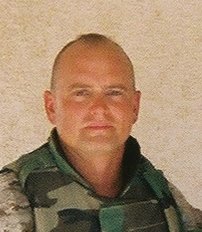A very good friend of mine is back in Iraq now. He’s leading a team of Marines who are training Iraqi soldiers. Not only am I happy for my friend because he’s doing what he loves to do, but I’m proud of his being part of the future of Iraq.
The future of Iraq is not just about standing up their army and rebuilding roads, schools, or hospitals. It’s about rebuilding the Iraqi people as a people. And that’s what my friend is doing, as much as helping to stand up their army.
In the documentary “My Country, Iraq” there is an interview with what appears to be a local Sheik whose words are rather insightful into his country’s situation. He speaks to the fact that the biggest casualty of Saddam Hussein’s era and the war which ended it was not the local cement factories or other infrastructure. He said the biggest casualty of Saddam Hussein was the mentality of the Iraqi people. It would take much longer to rebuild the mentality of the Iraqi people than it would any of the physical structures.
I agree. The biggest challenge we and the Iraqi people have faced is getting an entire generation (my generational counterparts in Iraq) to step to the plate, lead, administrate, and be free citizens in a new form of government which serves their best interest, but in which no one has any experience implementing or operating. After 30 years of Saddam Hussein’s oppression, there was a huge vacuum of refined leadership capability and a lack of the concepts for leadership.
Enter the Provincial Reconstruction Teams (PRTs). According to Multi-National Forces Iraq spokesman, Major General Caldwell, “the Provincial Reconstruction Teams teach, coach, mentor Iraqi civil leaders at all levels in the methods and means for developing governance capacity, promoting increased security, rule of law, political and economic development, and assisting provincial administrations to meet the basic needs or essential services of their populations.”
It was announced this week that 7 of the 10 planned PRTs are now in place to accomplish the tasks detailed by Major General Caldwell and move the Iraqi people forward; to help overcome that which has been the biggest obstacle to rebuilding Iraq.
The PRTs also represent a light at the end of the tunnel for our being able to leave a stable Iraq because “PRTs also transition the rebuilding efforts from us to the Iraqi’s…and leverage the Iraqi’s ability to build their future.” They are not only an essential step to rebuilding the mentality of the Iraqi people and providing the skills for self governance, but essential to empowering the Iraqi’s to rebuild their own country.
But of course security is critical to self-governance and that’s where my friend comes in again, training Iraqi soldiers. At this point, there are, according to Major General Caldwell, “a total of six Iraqi army division headquarters, 30 brigades, 89 battalions that are in the lead in their respective areas of operation.” Even though the Iraqi soldiers continue to be prime targets themselves, there has obviously been a shift in mentality of many Iraqi’s to forego the risk and join the army.
We also see a shift of attitude in the Al Anbar province. A report by the L.A. Times this week shows how the preference for action and initiative has taken hold and is growing. They reported that an agreement among tribal leaders there has held together. The tribal leaders had pledged to “clean out Al Qaeda insurgents” and were “as good as their word.” After the Iraqi’s had suffered “more than 8,000” casualties at the hands of the terrorists and facing “insurgents' demands for adherence to strict Islamic law,” they went after the Jihadists and have been capturing or in some cases killing them.
But, Baghdad is said by some to be the key for success in Iraq. Obviously it’s been an explosive place the last month or so. However, we’ve also focused much effort in Baghdad and comments by retired Major General Robert Scales in a Washington Times article this week show the degree of our success. He explained that the situation in some ways “in Baghdad is classic insurgency warfare…The enemy believes it is losing control of regions or neighborhoods and tries to reverse the trend with a spike in violence.” Obviously our efforts are working if the enemy is reacting as such.
But the real hope for Baghdad comes again with what appears to be a shift in mentality of the Iraqi’s for action. The leadership of the country has joined with local tribal, religious, military, and political leaders and formed a coalition to confront the problems there. An almost unheard of proposition and practice in a country which seems so fractured when viewed through our nightly news reports. There is hope in action such as this.
It is right that Condoleezza Rice flew to Iraq this week to push the process forward and assert a new sense of urgency into it. Combining this new sense of urgency with what is becoming a pattern of preference for action among the Iraqi’s are mindsets that can merge into a powerful new synergy for hope all of us can have for the future of Iraq.
Thursday, October 12, 2006
Subscribe to:
Post Comments (Atom)





No comments:
Post a Comment